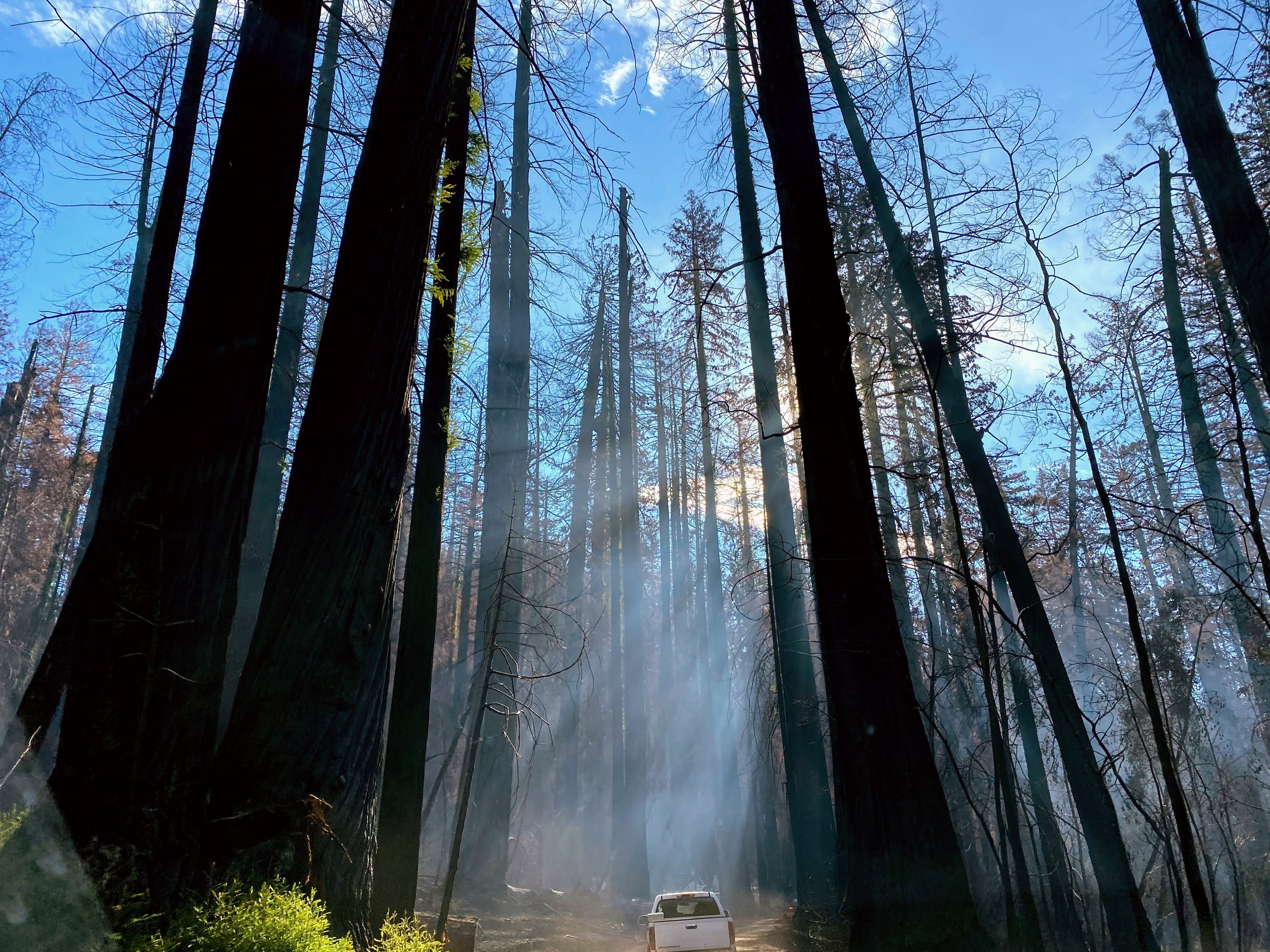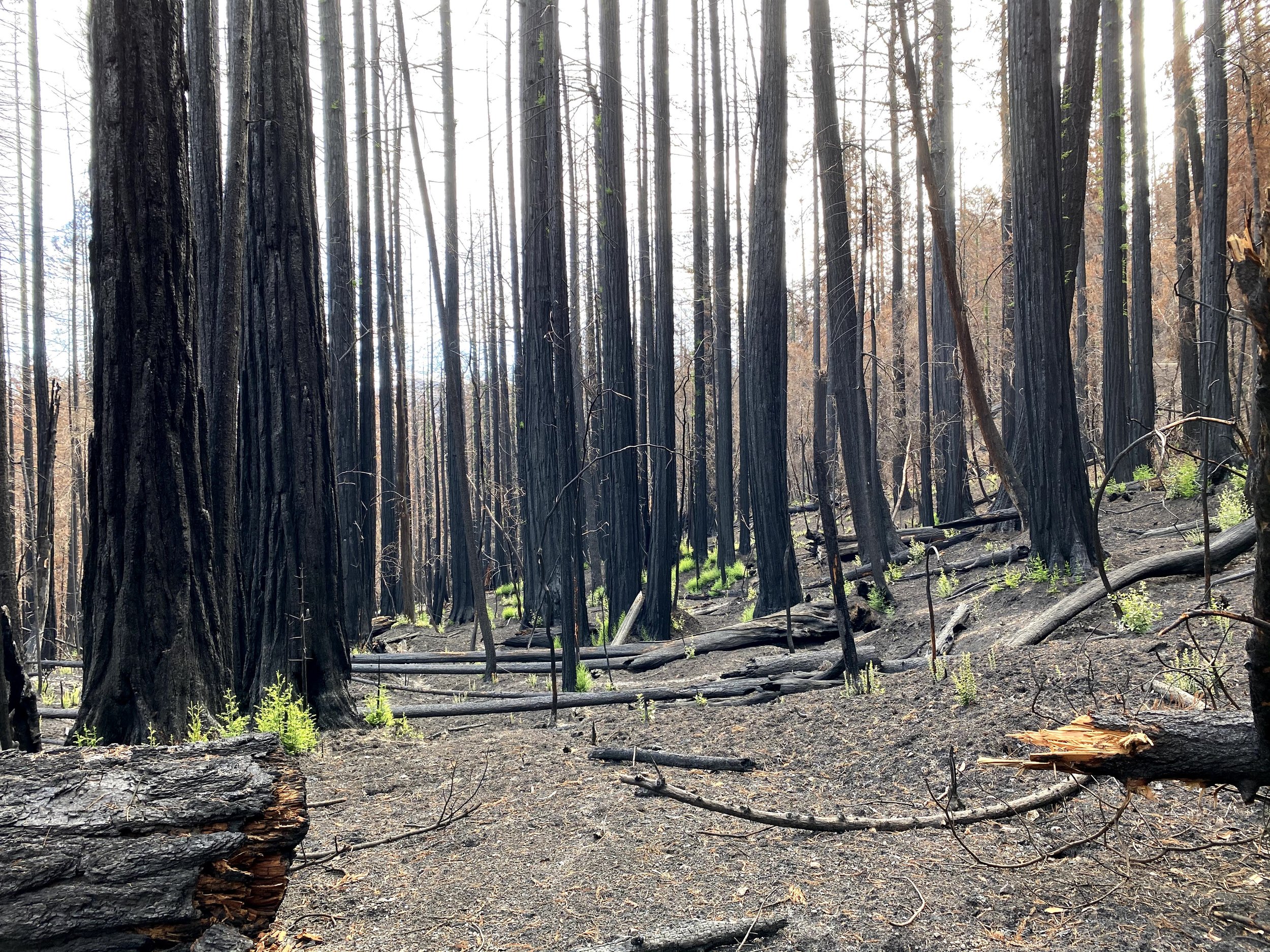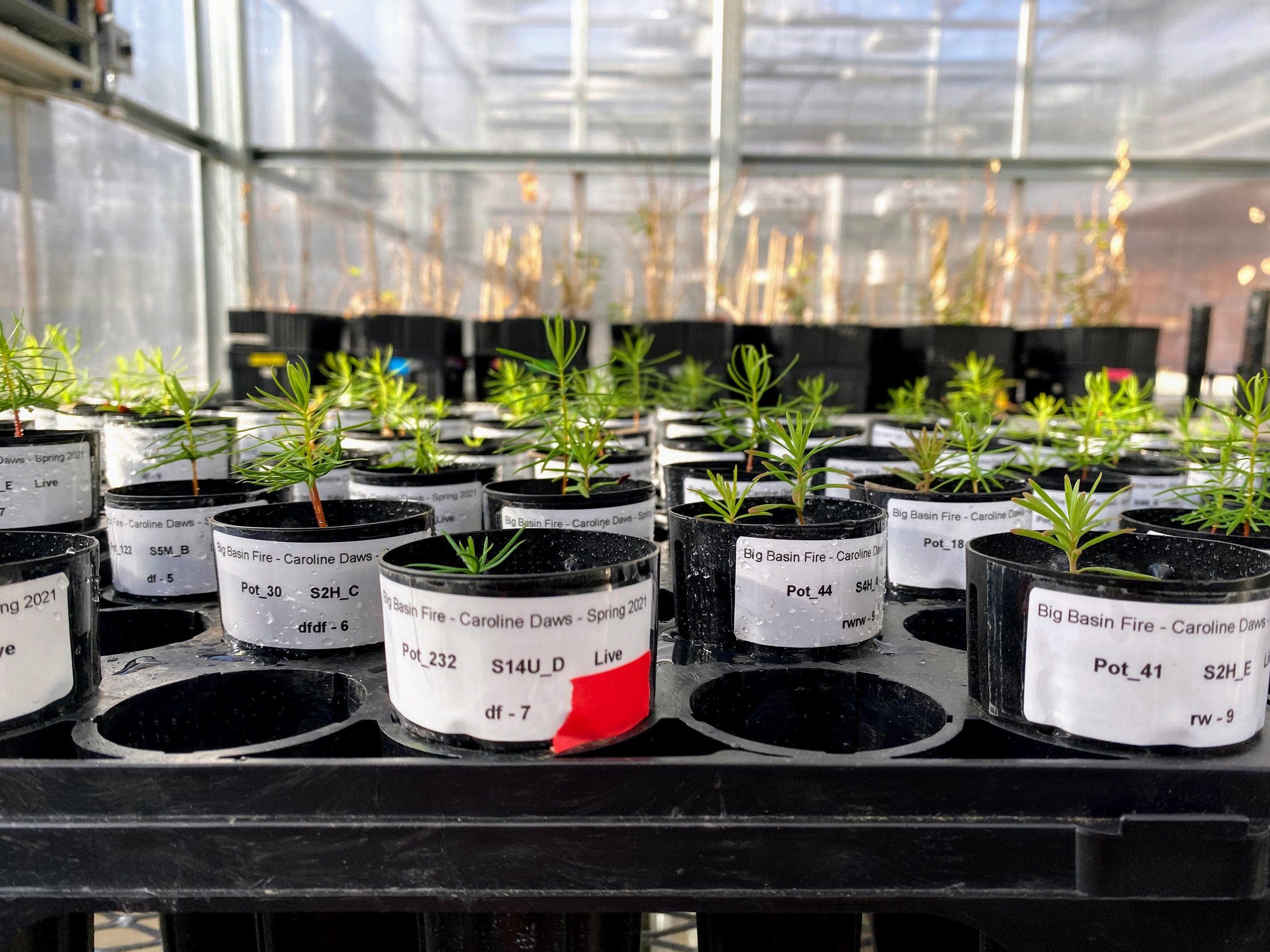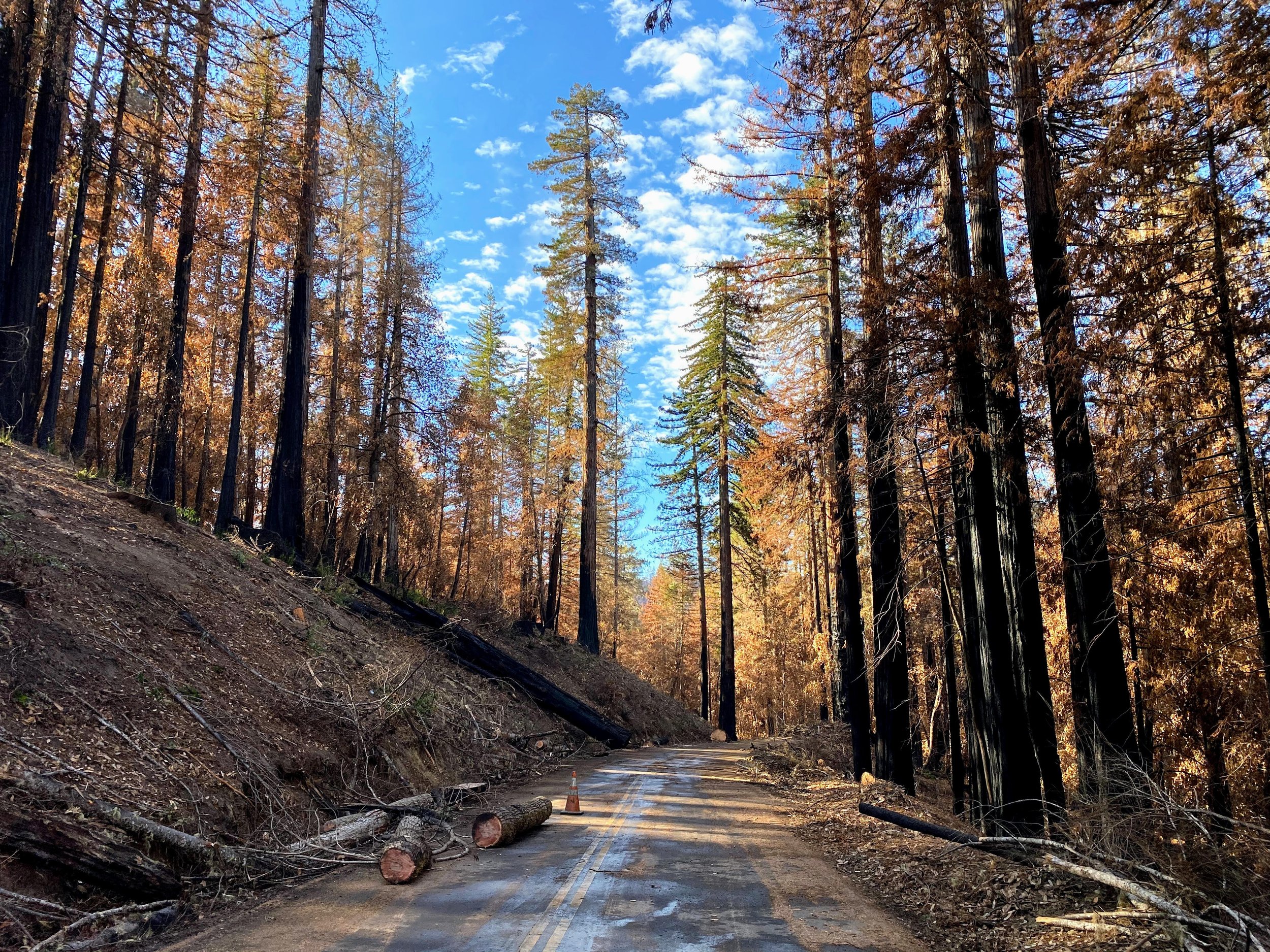The role of soil microbes in coast redwood forest recovery after wildfire




As wildfires grow more intense, they’re reshaping forests in ways we’re still trying to understand. One area we’re exploring is how these fires impact the communities of microbes in soil, which play a big role in the growth and competition of young trees, especially in challenging environments. In particular, fungi called mycorrhizal fungi help trees gather nutrients in exchange for sugars, while some other soil fungi can cause disease in seedlings.
Our study looked at how these microbial communities change after wildfire and how this affects the growth of two iconic tree species: coast redwood and Douglas fir. We conducted a greenhouse experiment using soil collected from burned areas in Big Basin State Park, which experienced severe wildfire during the CZU Lightning Complex Fire. We found that after intense fires, increased pathogen levels and reduced mycorrhizal fungi made it harder for seedlings to grow. In milder burns, however, Douglas fir seedlings had an advantage over redwoods.
Our findings suggest that as wildfires become more frequent, the interactions between soil microbes, fire severity, and tree neighbors could significantly influence which tree species thrive. This research helps us predict how forests may change over time in response to rising wildfire activity.